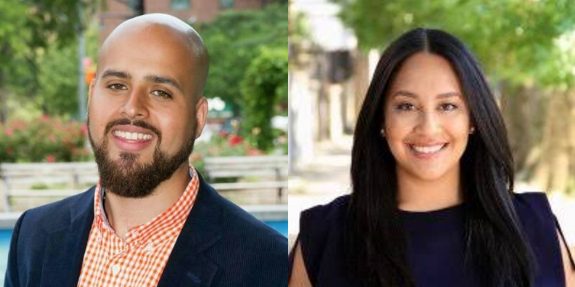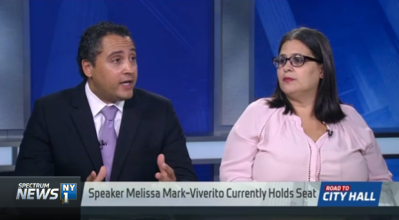City Council District 18 Candidates on Streets and Transportation Issues

Tomorrow’s Democratic primaries will be the decisive vote in most City Council districts, determining who will represent New York City neighborhoods for the next four years. In some races, the outcome is likely to come down to a few hundred votes or fewer.
Two weeks ago, Streetsblog sent four open-ended questions to the candidates in eight contested City Council races. We’ll be publishing the responses we received, as well as supplementary material from StreetsPAC questionnaires, in a series of posts this afternoon.
Below are the responses for the 18th District, which covers the neighborhoods immediately east of the Bronx River and south of Tremont Avenue. We received responses from two of the five candidates, Michael Beltzer and Amanda Farias. Ruben Diaz Sr., Elvin Garcia, and William Moore did not respond to Streetsblog’s inquiry.
New York City bus service keeps getting worse. Average speeds are the slowest in the nation, and ridership continues to drop. New York City government can improve service by prioritizing buses on city streets. What policies do you support to make bus service faster and more reliable? Where would you like to see bus improvements in your district?
Michael Beltzer: TSP, Bus Lanes, Queue Jumping, All Door Boarding and better bus spacing. I would like to see countdown clocks, bus transfer stations and bays. I would like to upgrade the Bx 5, Bx 27 and Bx 39 to SBS and get a real BRT line on Bruckner Blvd.
Amanda Farias: I would promote using proof-of-payment and making fewer stops. Additionally I would repurpose lanes and make them dedicated bus lanes to ease the flow of traffic on buses. These measures have been proven to increase on-time performance of buses, and reduce travel times, which leads to more people using the bus. The solution might not be a popular one among car riders, but is necessary to increase the efficiency of buses, which would ultimately mean fewer people relying on their cars for transportation.
How would you make bicycling safer in your district? Do you support the expansion of protected bike lanes, even if street space has to be reallocated from traffic lanes or parking spaces?
Michael Beltzer: I will continue to advocate for more lanes to be placed in the district as I have while on the local Community Board with projects like the Castle Hill road diet. I will push for curbside lanes and to finish the Soundview Master Greenway Plan.
Amanda Farias: I support the expansion of protected bike lanes. They have shown to be a great solution to minimize traffic and incentivize ridership among cyclists. I would also provide free helmet programs and events in conjunction with DPR for residents within my community.
How can the City Council best use its powers to reduce traffic deaths and injuries and ensure all New Yorkers can safely walk and bike to get where they want to go?
Michael Beltzer: To strengthen the power of NYCDOT to act in the best interest of the most vulnerable road users, independent of Community Board approval.
Amanda Farias: I would add speed cameras, speed bumps, safer cross walks, expand the sidewalks, create slow zones, and expand Vision Zero.
Congestion pricing has been in the news as a potential way to reduce traffic jams and fund the transit system. One option is the Move NY plan, which would toll all East River crossings and a cordon across Manhattan at 60th street while reducing tolls on outlying MTA crossings. The revenue would fund the MTA capital program, accelerating transit improvements and reducing the need for future fare hikes. Do you support this plan?
Michael Beltzer: Yes as well as a Transit Development Tax and reevaluation PILOTs and other tax incentives.
Amanda Farias: The idea of congestion pricing is good at face value. The added revenue would go a long way to help fund the ailing MTA. If we do implement congestion pricing, and charge people for using their cars to get from point A to point B, we need to ensure we are also creating more viable options for public transportation. Much of the Bronx is a transportation desert, leaving constituents with no option but to use their cars to commute. Congestion pricing could potentially place a further burden on those who have to rely on their cars to get to work if we didn’t also offer them options that included more reliable public transportation. Additionally, if NYC is going to be paying congestion pricing, we need to ensure that our money is being invested back into the community in a way that is equitable to the investment the MTA places in Metro North and LIRR.


